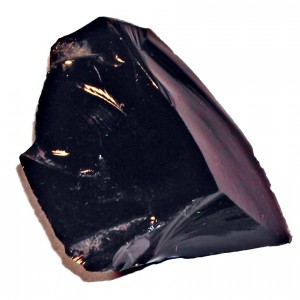Obsidian Micro-core – Dora Moutsiou

by Dora Moutsiou
Obsidian’s high quality for the manufacture of stone implements was recognised very early on by prehistoric tool-makers. Although the use of obsidian is more pronounced in late prehistoric times, particularly in the Neolithic, it is much earlier that the first archaeological evidence for the procurement of obsidian is recorded. Obsidian handaxes are present in Acheulean sites in Africa, for example Kariandusi, but more commonly obsidian Palaeolithic assemblages include cores, retouched tools, flakes and fragments. Obsidian’s excellent knapping qualities resulted in it being transported several kilometres on the Palaeolithic landscape throughout the world, occasionally at great distances too.
Reading
Cann, J. R. & Renfrew, C. 1964, The characterization of obsidian and its application to the Mediterranean region, Proceedings of the Prehistoric Society 30: 111-133
Gowlett, J. A. J. & Crompton, R. H. 1994, Kariandusi: Acheulean morphology and the question of allometry, The African Archaeological Review 12: 3-42
